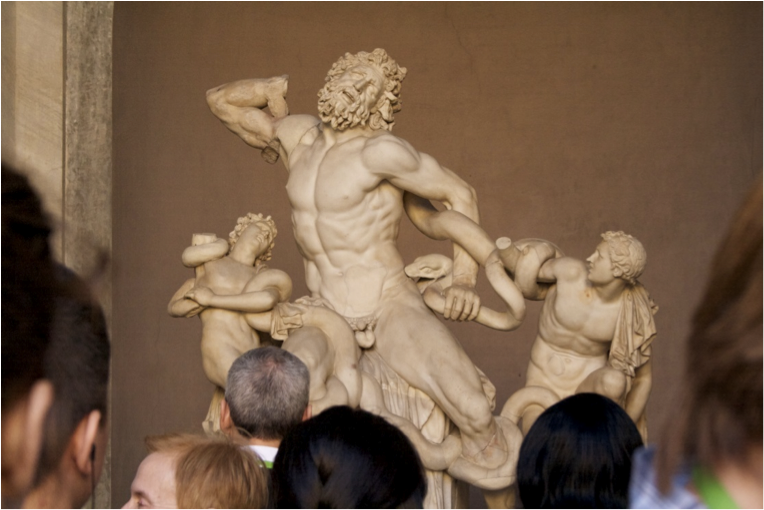Greetings from Day Four in Rome! How are you guys? Good? Fine? Okay, cool. So, let’s get down to the real question on everyone’s mind—what did we do in Rome? Well, it was a fun-filled day of wonder and amazement. For breakfast, we had our usual cappuccino/tea, juice, and a flaky pastry at Ciao Bella. After everyone was fed and sated, we headed by train towards Ostia, a gorgeous port ruin that tends to pop up in a lot of Ancient Roman history (Tyler doesn’t really know what happened he wasn’t paying attention — bad Tyler!). But yeah, we visited the preserved ruins of the city of Ostia on a gorgeous sunny day. It was amazing to see what a real Roman unperturbed city looked like—what the people way back then lived like. The gorgeous city included an amphitheater, business/merchant offices, apartments (including one of a famous Latin writer supposedly), grain mills, laundry/dye gardens and a bunch of other random stuff that was probably pertinent to life in the Roman Empire. It was pretty neat and extremely hilly with a lot stairs. Afterwards, we proceeded to have our hour-long lunch, where we spread out in groups to eat tourist priced lunch ($$$). Lunch lasted, and we had fun cracking jokes, talking and seeing some Hotchkiss students that we know. Soon after lunch, we gathered again to go to a museum in the preserved city, and to see the bathrooms that they would have used, before walking through a really cool medieval city. Then we hopped on the train to get back to our lodging at Cappucini; some students split from the group to go explore the stores around the famous Spanish Steps and others preceded to the hotel to hang out and get some much needed rest. When everyone had gathered from their siesta, chilling out, maxing, and relaxin’ all cool (but not shooting some b-ball outside the school), we had a delightfully delicious dinner. The meal was served in courses that never seemed to end: tomato on toast, tasty vegetables, pizza, fried vegetables, bread, and then a pork and chicken dish. Even though everyone was full, we had a little celebration with a chocolate and cream cake for Ms. Nihal Kayali’s birthday (YAY!), and we finished off the day by going out for some gelati/gelato with the Lawrenceville students. All in all it was a fun day that seemed to never end. Good night it is 12:15 am here, and after putting it off, we have finally finished this blog post! Ciao!
Sincerely,
Your Lovely Fifth Formers
 |
| exterior of the Ostia amphitheater |
 |
| The whole gang at the amphitheater in Ostia Antica |
 |
| Hannah and Violet pose for a moment in Ostia |
 |
| Mr. G getting some much needed sun after a long winter |
 |
| Ms. Kayali's birthday surprise |


























